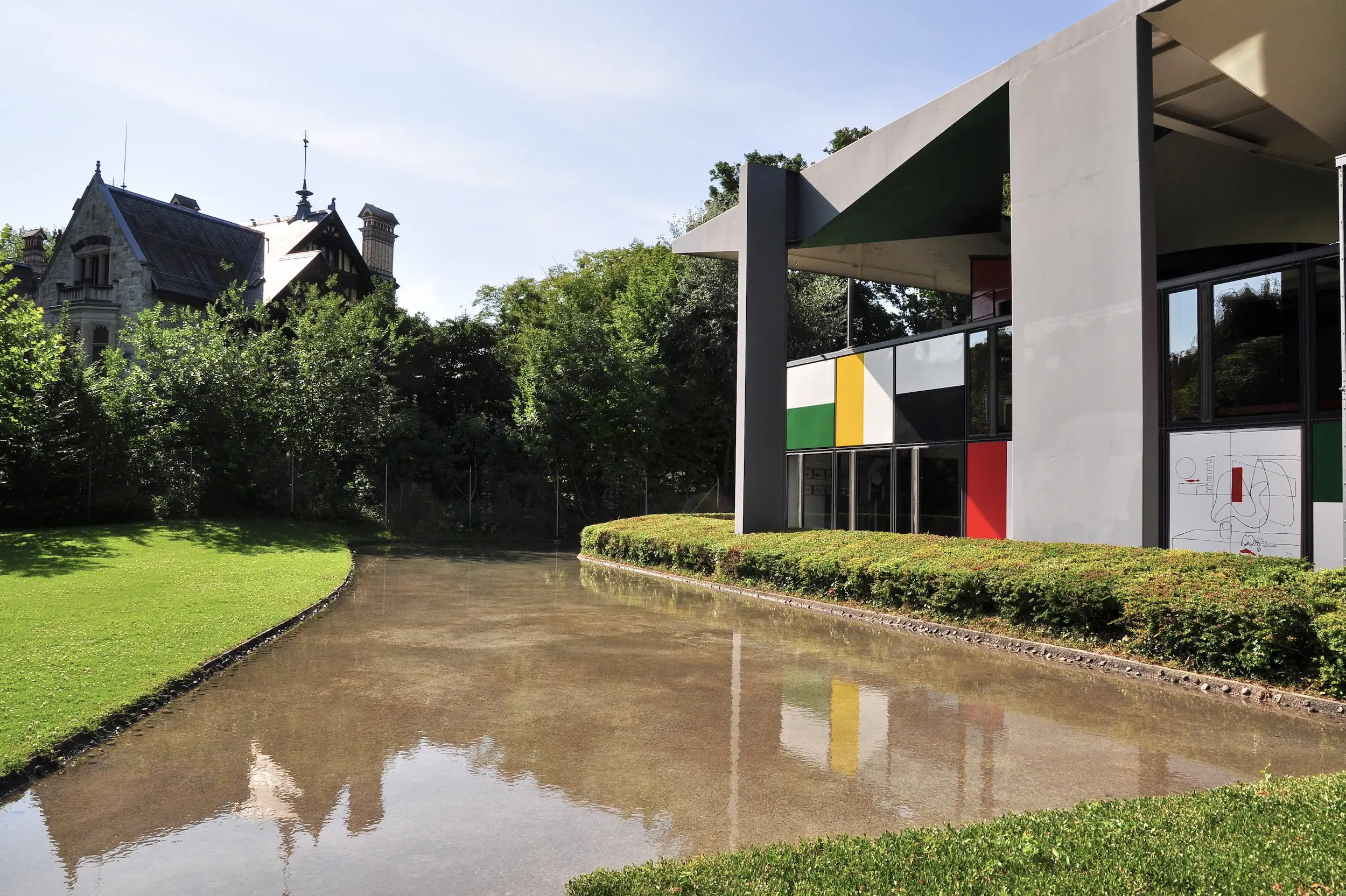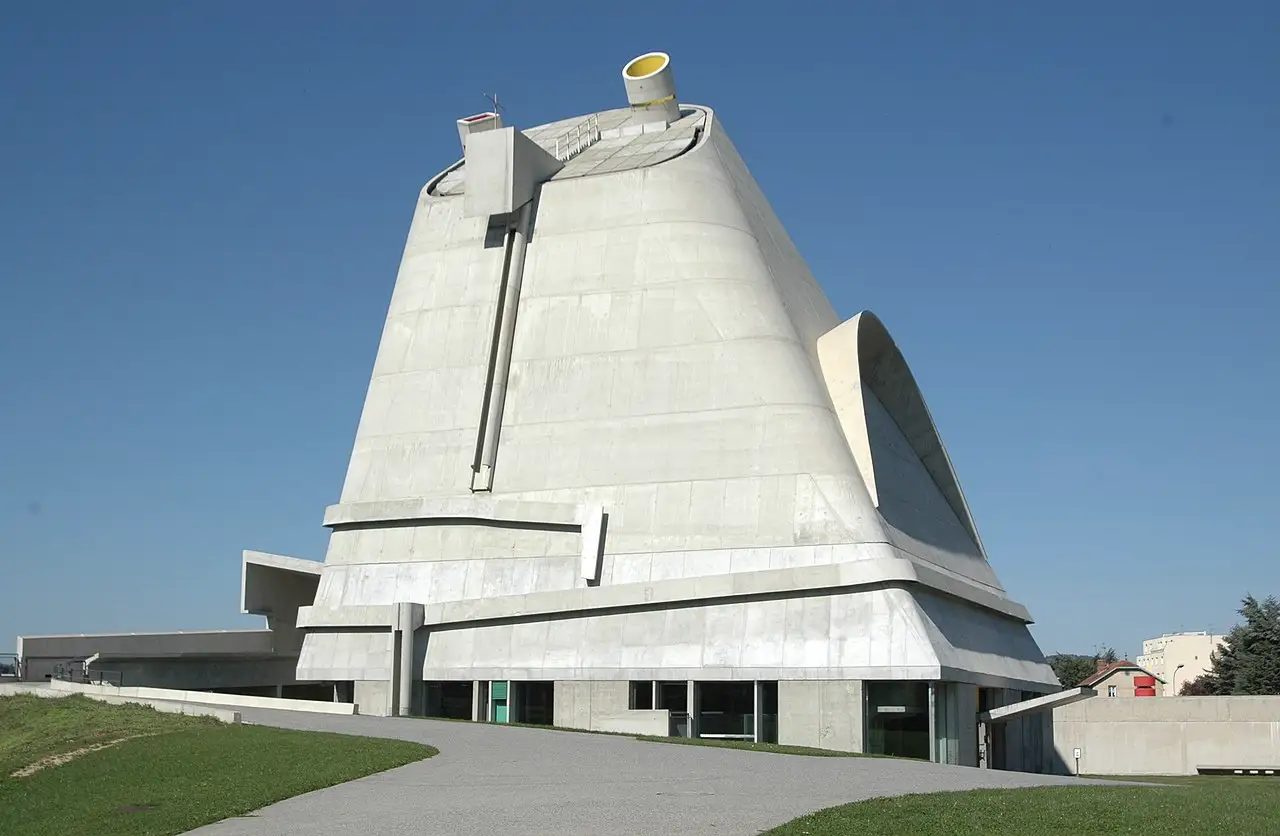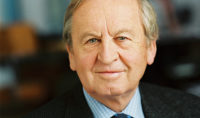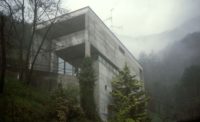With the death of José Oubrerie, 91, on March 9, in Lexington, Kentucky, the world lost one of the most inspiring and charismatic architectural educators in both France and the United States. He was a talented and committed architect who realized a number of canonical works including the French Cultural Institute, Damascus (1986), the Miller House, Kentucky (1990-1992), and above all, the church of Saint-Pierre realized as part of a unified civic complex in Firminy Vert, France (2003-2006).
Born in Nantes, France, in 1932 and studying Fine Arts there from 1946 to 1951, Oubrerie went to Paris in 1955 to study architecture at the École Nationale Supérieure des Beaux Arts. In 1957, Oubrerie began work in the famous Atelier Le Corbusier, 35 rue de Sèvres in Paris, where he worked directly with the Franco-Swiss master, most particularly on the first designs for Saint-Pierre, Firminy Vert in the early 1960’s. In one way or another, he would be involved with this work for most of his professional life, up to its completion by the French State in 2006, over four decades later; following its partial construction and abandonment in the first half of the 1970’s.
Towards the end of Le Corbusier’s life, Oubrerie worked closely in the atelier with the Chilean architect Guillermo Jullian de la Fuente on the design of a number of Le Corbusier’s late works including the regrettably unrealized hospital Le Corbusier envisioned for Venice in 1965 and the didactic Heidi Weber Pavilion in Zurich of virtually the same date. Following a brief partnership with de la Fuente between 1965 and 1966, Oubrerie opened his own studio in collaboration with his assistant Kirkor Kalayciyan, with whom he would design the French Cultural Institute in Damascus, a small office building, and two low rise suburban estates within Paris; the Villa Nieuport comprising 30 dwellings with garages, in the 13th Arrondissement, and the so-called Reuilly Estate consisting of 75 units, in the 12th Arrondissement, both schemes being promptly realized.

Heide Weber Museum, Pavilion Le Corbusier, Zurich. Photo by Roland Fischer, Wikimedia Commons
In the late 1970’s Oubrerie would become relatively familiar with the northern Italian architectural scene, above all through his collaboration with Giuliano and Glauco Gresleri on the 1979 reconstruction in Bologna of Le Corbusier’s L’Esprit Nouveau, Pavilion of 1925.
As far as his academic career is concerned, 1974 was decisive for Oubrerie; that year he began to teach in the prestigious architectural school known as UP8 in Paris and, at the same time, be invited to his first visiting professorship at The Cooper Union, Irwin S. Chanin School of Architecture in New York. This would be the beginning of Oubrerie’s nomadic, academic career, teaching virtually simultaneously in Paris and, in 1981, at the Politecnico in Milan. In the same year, Oubrerie is invited as a visiting professor in the college of architecture in the University of Kentucky, a position which would continue until 1984.
From 1985 to 1987, Oubrerie served as the director of the third year masters studio in architecture at the GSAPP, Columbia University, New York and simultaneously, was a visiting critic in the architecture department in the New York Institute of Technology located on Long Island. In 1987, after further involvement as a visiting professor, Oubrerie was appointed to the combined position of dean, chair, and professor in the College of Architecture at the University of Kentucky; a position he held until 1991, when he accepted a full professorship in the Knowlton School of Architecture at The Ohio State University in Columbus, Ohio. Upon retiring from The Ohio State University, Oubrerie continued teaching as a visiting professor, first at the University of Illinois, Chicago (2013-2016) and then at the University of Kentucky (2017 & 2020).
With the formation of the Atelier Wylde-Oubrerie in 1989, Oubrerie entered into the design of the canonical Miller House in Lexington, Kentucky (1989-92), which would be a ‘free-style’ Mannerist improvisation based on Le Corbusier’s monumental late Modern manner. As a result it appears as a luxurious ‘suburban middle-class dwelling’ rhetorically handled as if it were a diminutive public building.

Saint-Pierre Firminy, France. Photo by lapin.lapin, Wikimedia Commons
Despite this highly inventive ‘exercise in composition,’ the most sublime achievement of Oubrerie’s architectural career was surely his subtle development, modification, and completion of Le Corbusier’s Saint-Pierre church. Apart from the largely invisible technical adaptations due to changes in the manner of shell concrete construction since the original design, the most significant aesthetic modification was the introduction of innumerable cylindrical apertures, lined with metal tubes, across the surface of the concrete vault over the nave, distributed so as to simulate the constellation of Orion. These small holes, activated by the movement of the sun, continue to proliferate unpredictable, sporadic, constantly changing, light effects within the volume of the church, according to the time of day and the season of the year. Here surely, we are witness to the effects of a cosmic pagan gesture insinuated into the body of a Christian church, a gesture profoundly reflecting Le Corbusier’s own ambiguous attitude towards monotheistic manifestations of orthodox religion.
Towards the end of his life he would become increasingly focused on objective investigations and exhibitions of his work, supplemented by equally rich representations of the substance of his production in exotically titled books. Most recently the theoretical project Chapel of the Mosquitoes, recent paintings, and architectural work exhibited and published by ’T’ Space, Rhinebeck, New York (2015).
Apart from his creativity as an architect, Oubrerie will be recognized by his students and his colleagues for his uniquely effective teaching methods such as animating his provocative lectures with didactic free-hand, calligraphic drawings, executed on the spot by his superb hand as a draughtsman and projected onto a large screen before his spellbound audience. In teaching design, there was his penchant for getting students to make fragile, paper-thin models of their spatial concepts which he would then transform significantly by adding one element or eliminating another, more often a mixture of both. His exceptionally perceptive criticism, conveyed by one-on-one dialogue, juries, and personal observations delivered with his warm enthusiasm for the student’s creative efforts will be remembered.
José Oubrerie is survived by his creative partner, wife, and inspiration Cicely Wylde-Oubrerie, his son and renowned Parisian artist Clement Oubrerie, and his 17 year-old grandson Jules Oubrerie, who aspires to become an architect.




Post a comment to this article
Report Abusive Comment